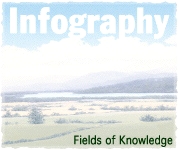
 | |
Visual Recognition of Familiar Objects | |
The following sources are recommended by an expert whose research specialty is the visual recognition of familiar objects. |
· Biederman, I. (1987). Recognition-by-components: A theory of human image understanding. Psychological Review, 94, 115-147.
· Edelman, S. (1998). Representation is representation of similarities. Behavioral and Brain Sciences, 21, 449-498.
· Farah, M. J. (1990). Visual agnosia: Disorders of object recognition and what they tell us about normal vision. MIT.
· Hummel, J. E., and Biederman, I. (1992). Dynamic binding in a neural network for shape recognition. Psychological Review, 99, 480-517.
· Marr, D. (1982). Vision: a computational investigation into the human representation and processing of visual information, W. H. Freeman.
· Ullman, S. (1989). High-level vision: Object recognition and visual cognition. MIT Press.
· Biederman, I., and Cooper, E. E. (1991). Priming contour-deleted images: Evidence for intermediate representations in visual object recognition. Cognitive Psychology, 23, 393-419.
· Logothetis, N. K., and Sheinberg, D. L. (1996). Visual object recognition. Annual Review of Neuroscience, 19, 577-621.
· Marsolek, C. J. (1999). Dissociable neural subsystems underlie abstract and specific object recognition. Psychological Science, 10, 111-118.
· Poggio, T., and Edelman, S. (1990). A network that learns to recognize three-dimensional objects. Nature, 343, 263-266.
· Tanaka, K. (1993). Neuronal mechanisms of object recognition. Science, 262, 685-688.
"The Infography about Visual Recognition of Familiar Objects"
http://www.infography.com/content/324428593425.html
© 2009 Fields of Knowledge
Essex, Iowa 51638-4608 USA